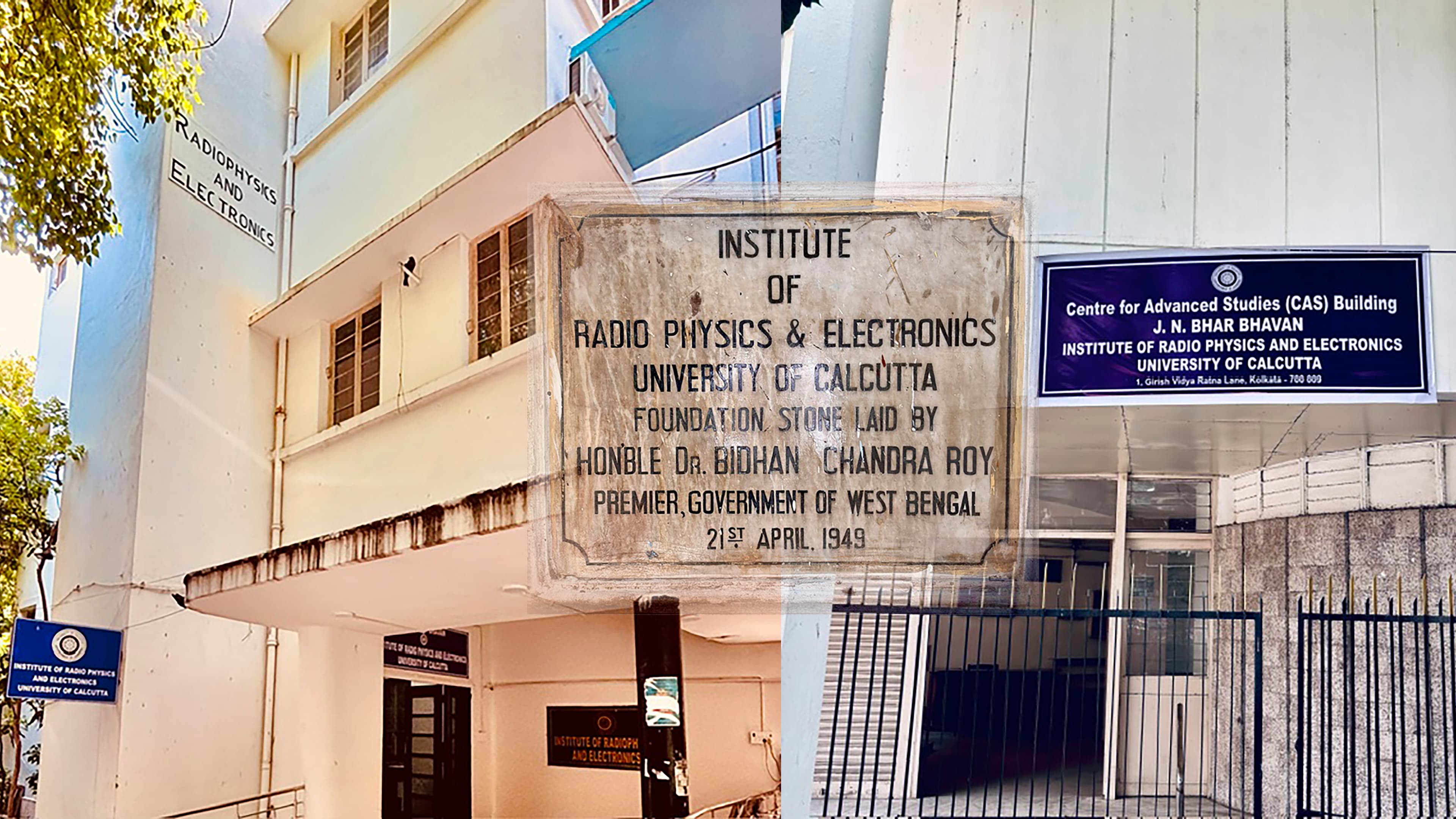


WELCOME TO INSTITUTE OF RADIO PHYSICS AND ELECTRONICS
The Institute of Radio Physics and Electronics was established in 1949 as a post-graduate teaching and research department of the University of Calcutta. Late Professor S.K. Mitra, D.Sc, F.R.S., was the Head of the Institute and continued until his retirement in 1955. In retrospect, it was in the year 1925 that the University of Calcutta introduced "wireless" as an elective subject for special study in its post-graduate course in Pure Physics and started at the same time a wireless laboratory for teaching and research in the use of vacuum tubes and radio wave propagation in the upper atmosphere. Ever increasing applications of radio waves, especially on the eve of and during the World War II, and the rapid development of electronics as an important science by itself created a new situation. Inclusion of these developments was found impossible if the teaching and research activities in these subjects were to be confined within the necessarily limited scope allowed to them as a part of another post-graduate course. A large-scale expansion and re-organization became imperative. To meet this situation the university, in 1946, formulated a plan for the creation of a separate post-graduate department for Radio Physics and Electronics by pooling the existing resources of the Wireless section of the Pure Physics department and the Communication Engineering section of the Applied Physics department. A visiting committee of the All India Council for Technical Education (A.I.C.T.E) approved this plan in 1947. Grants sanctioned by the Government of India on the recommen ...
FOUNDER

SISIR KUMAR MITRA, FRS
Padma Bhushan
FATHER OF RADIO SCIENCE IN INDIA
Vision and Mission
Advancement of Learning in Electronics and Communication Engineering and related disciplines by fostering a culture of academic excellence driven by innovation, research, and lifelong learning, aimed at addressing contemporary and future societal needs through high-impact, value-added education and technological advancement. Read More
